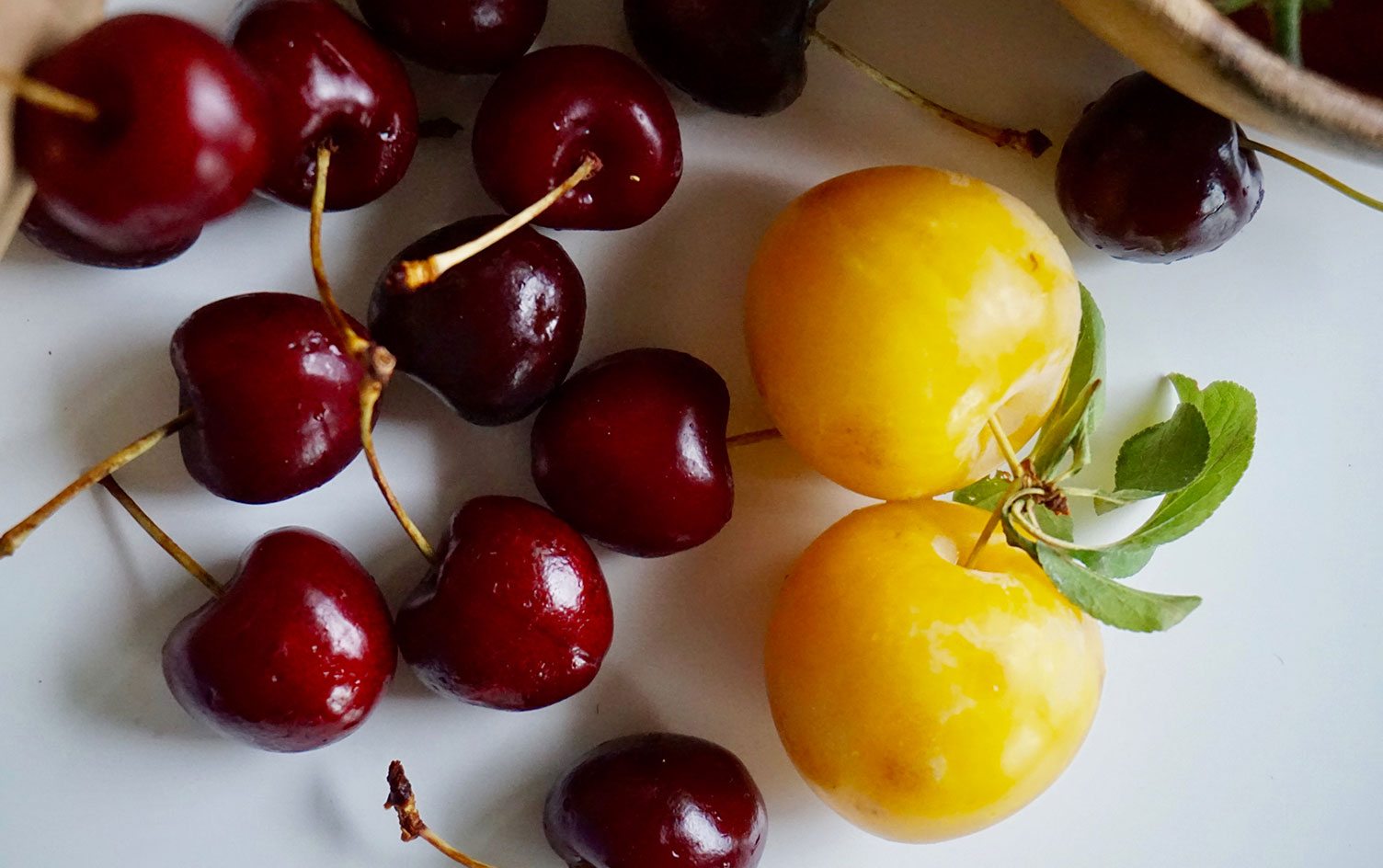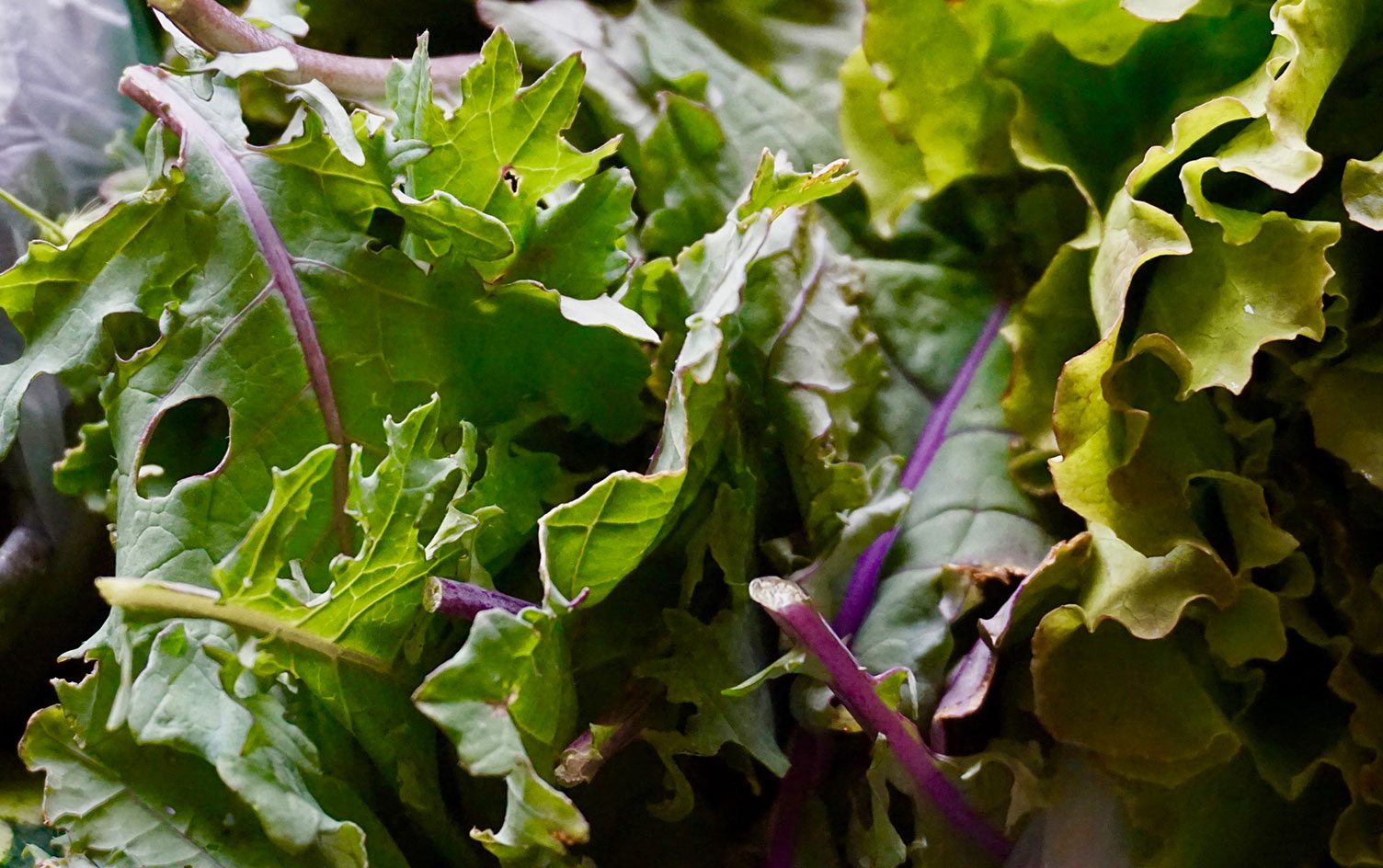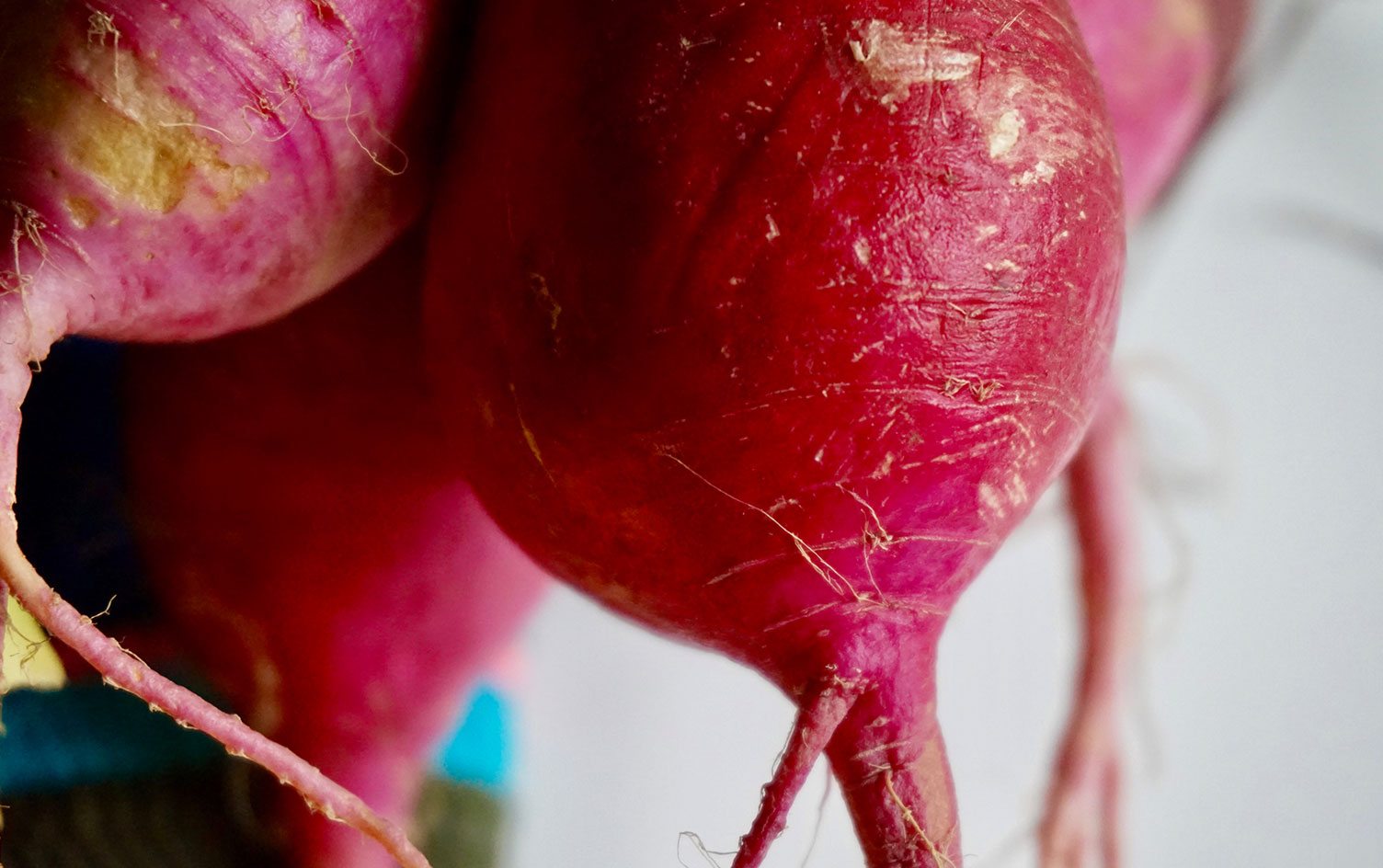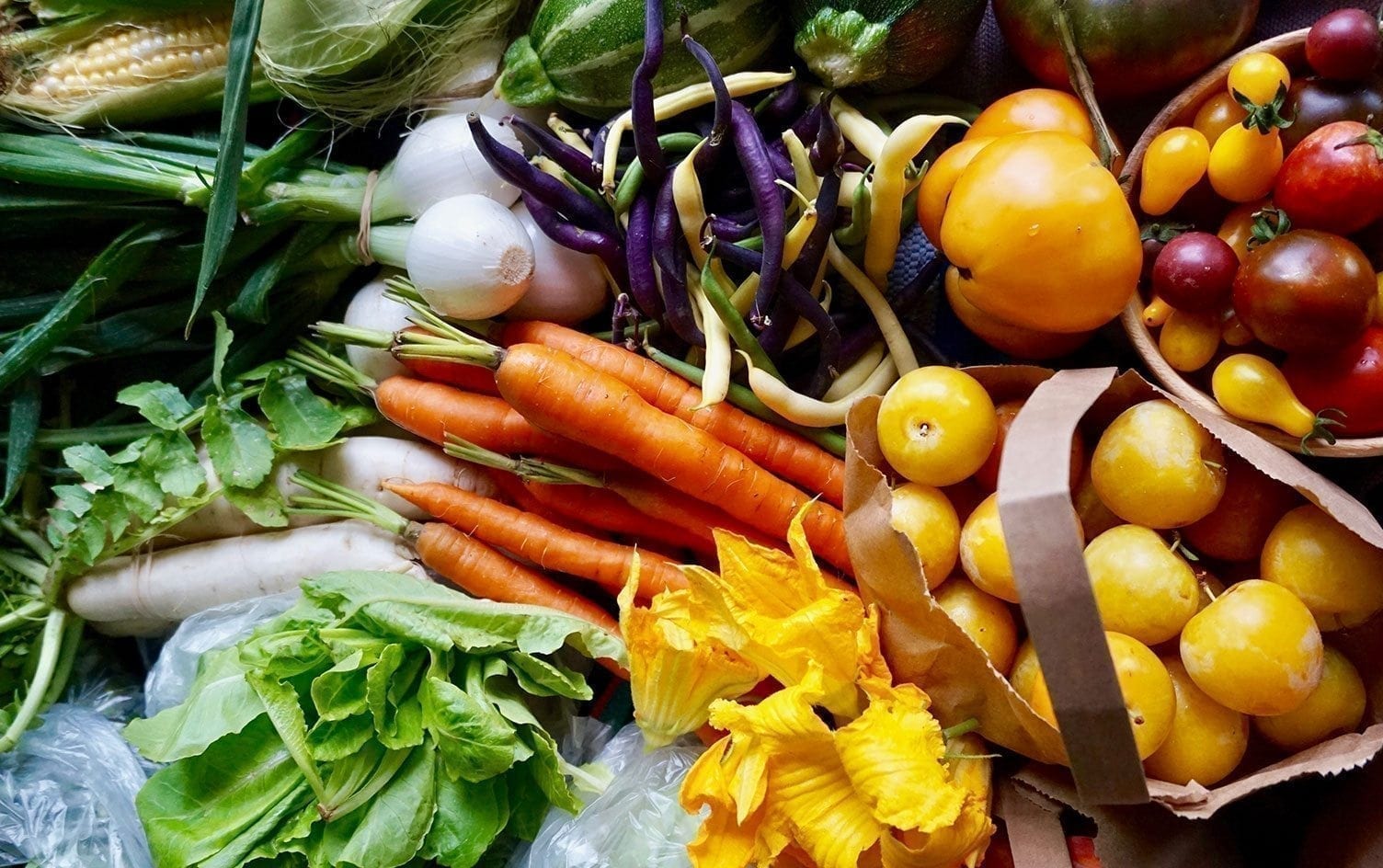So, you’ve succumbed to the bounty of summer, filled your arms, baskets, countertops and refrigerator with the colors of the rainbow — all the fruits, vegetables and herbs that are filling the market right now. And it tastes so good, doesn’t it? The hardest part about this cornucopia of deliciousness is keeping it all fresh and tasting its best.
Here’s our quick guide to keeping those fresh nibbles at their peak until you’re ready to prepare. For example, did you know that storing fruits and vegetables together is the quickest (and most common) way to prematurely ripen (and ruin) your foods? Fruits give off a high level of ethylene (a ripening agent) that can prematurely ripen (and spoil) nearby vegetables.
In a nutshell, the “one bad apple” adage rings true. Instead, treat each fruit and vegetable with specific care.
A FEW BROAD TIPS
VEGETABLES
Before storing fresh veggies, remove all ties and rubber bands and trim leafy ends, but leave an inch to keep the veggies from drying out. If you’re storing veggies in a bag, make sure there’s a hole to allow airflow, then pack the veggies loosely in the refrigerator to prevent premature rotting (they still need room to breathe in there). The more space they have, the longer they’ll stay fresh. Pro tip: Leafy greens can be washed before storing by soaking them in a sink full of water, while soft herbs and mushrooms should not be washed until right before they are used.
FRUITS
Stone fruits, avocados, tomatoes, mangoes, melons, apples and pears continue to ripen if left sitting on a countertop, so only leave them out if you don’t mind them getting a bit more ripe. (Store them in the fridge when you’re ready to slow that process.) Fruits like bell peppers (yes, fruits!), grapes, citrus, berries and cherries start to deteriorate if they aren’t refrigerated. Bananas, in particular, ripen very quickly, and also speed the ripening of any nearby fruits.
A FEW SPECIFIC TIPS
BERRIES
Berries are tremendously delicate once picked … and expensive. (Making them all the more disappointing when they spoil prematurely.) Wash your berries in a diluted vinegar bath (1 cup vinegar plus 3 cups water) and gently spin them dry in a salad spinner lined with paper towels until they are completely dry. The vinegar helps to destroy mold spores and bacteria on the berries that threaten ripeness. Store the cleaned berries in a sealable container lined with paper towels, leaving the lid open a little to allow moisture to escape.
READ MORE > 7 REASONS (BEYOND TASTE) TO CHOW DOWN ON RASPBERRIES
CHERRIES

Cold storage is key to keeping cherries fresh. Cherries lose more quality in one hour at room temperature than a day in the refrigerator. So get those cherries in the fridge as soon as possible, preferably wrapped in a plastic bag. Avoid washing them until just before eating and always use cold water.
CUCUMBERS
Even though chilled cucumbers are the epitome of refreshing, they should be stored at room temperature — not in the refrigerator. Cucumbers are sensitive to temperatures below 50°F so cucumbers thrive and last longer at room temperature. If you store them in the fridge (below 50 degrees,) they’re prone to developing “chilling injuries,” including water-soaked areas, pitting and accelerated decay. If you keep your cukes on the countertop, know that they’re highly susceptible to ethylene — the ripening agent in most fruits — so keep them separate. And, if you insist on chilling your cukes, keep them toward the front of the fridge in the middle where it’s warmer, and eat within three days.
GREENS

The best way to store fresh, leafy greens is to wash them, shake off the excess water in a salad spinner, then spread the greens on paper or cloth towels to dry. With the greens still on the towels, roll the towels and refrigerate until you’re ready to eat; unroll the towels just enough to retrieve your greens then roll them up again! The absorbent towels do a great job of keeping the greens moist, but not wet, and protect the greens from the sometimes harsh conditions in the fridge.
HERBS
The best way to store fresh herbs is to keep them like you would flowers — in a vase of water. Trim the stems every few days to keep the herbs fresh, and use at will.
ONIONS
Surprisingly enough, onions ripen quickly in the fridge and give off a high amount of ethylene … so we suggest storing them well away from all other fruits and vegetables on the countertop. This not only keeps your onions ripe, but keeps everything else in the fridge ripe longer, too.
ROOT VEGETABLES

Carrots, radishes and beets and other root vegetables are hearty in your recipes, but are actually relatively delicate and tend to wilt and get limp once picked and refrigerated. For snappy carrots, beets and radishes, trim, then store them in a bowl of cold water, covered in the fridge.
STONE FRUIT
Plums, peaches, apricots and nectarines continue to ripen when stored at room temperature on the countertop. We suggest keeping them on the countertop until just before peak texture and taste, then refrigerate and eat as soon as possible. (That is, if your fresh summer peaches make it more than a day at home.)
READ MORE > THE TRUTH ABOUT CORN
SWEET CORN
You can theoretically store corn for several days refrigerated in the husk, but they will gradually lose their sweetness and begin to taste starchy even when cooked. Corn connoisseurs will tell you sweet corn should be eaten the day it’s picked, preferably within hours, while the corn is at its sugary peak. With any corn you can’t eat right away, it’s best to slice off the kernels and freeze them for using in soups or salads.
TOMATOES

In his book, “On Food and Cooking,” Harold McGee explains that refrigerating tomatoes damages the membranes inside the fruit walls, causing the tomato to lose flavor and develop the mealy texture we associate with mid-January grocery store tomatoes. The best way to store tomatoes is on the countertop at room temperature. They actually continue to develop flavor until maturation peaks a few days after picking.




